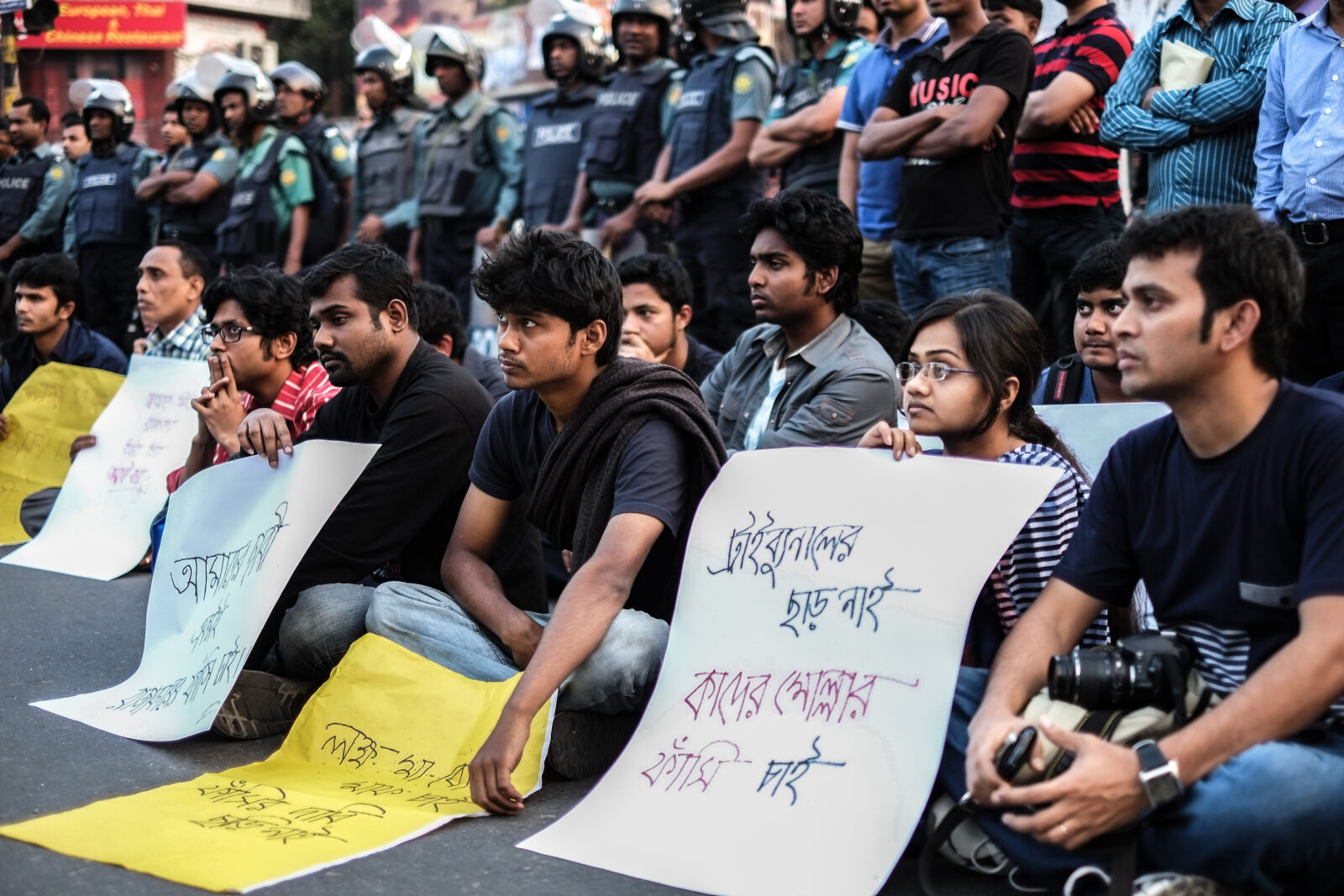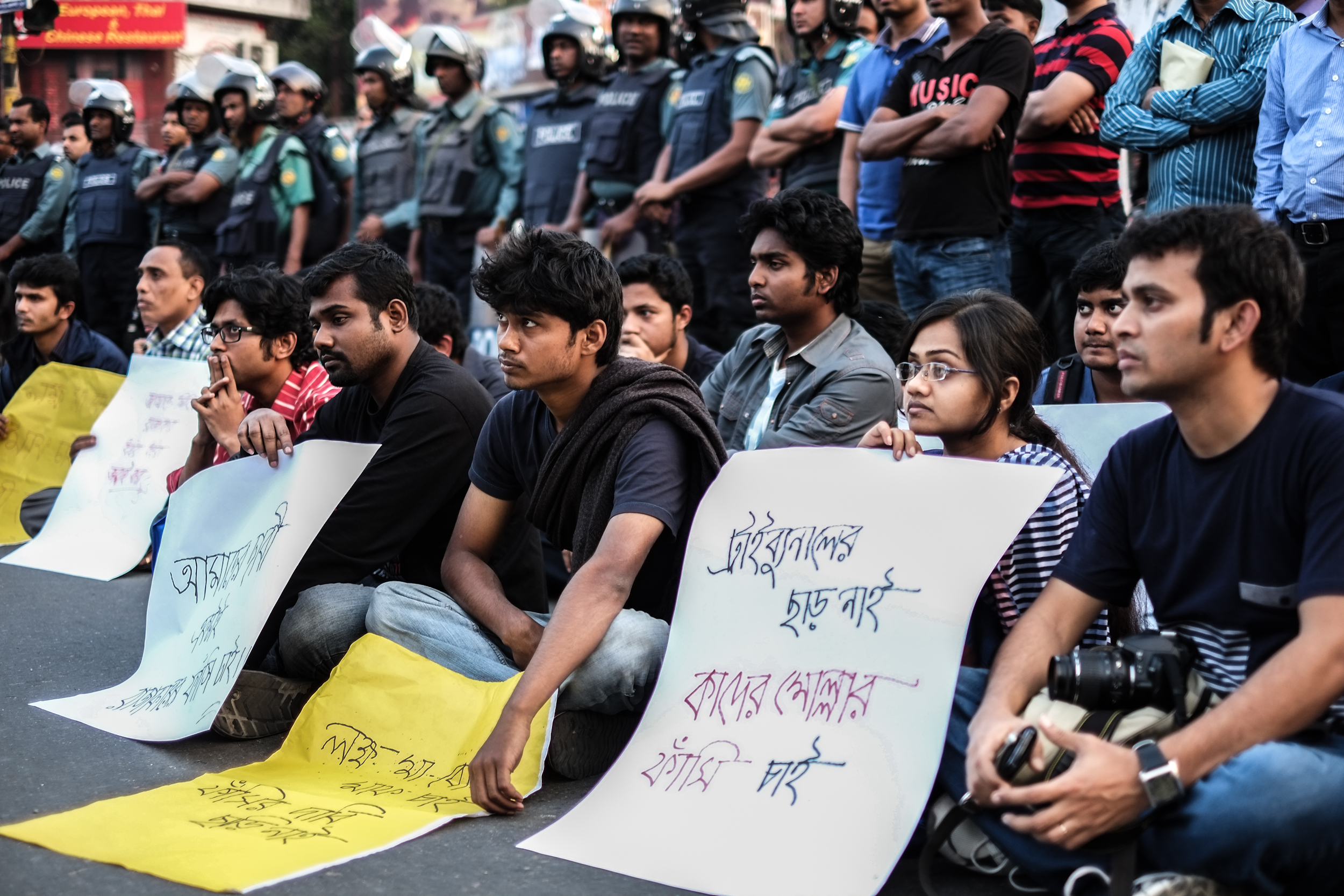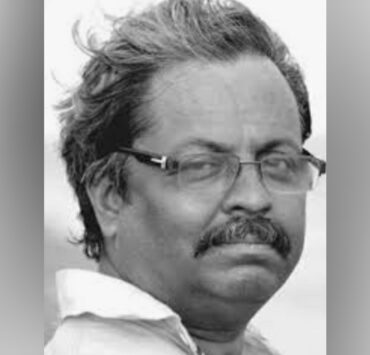
By Rina Mukherji

After Tahrir Square, it is the Shahbagh protests in neighbouring Bangladesh that have come to dominate the social media all over the world. A regular on Facebook or Twitter is often astounded by the massive status changes that mark important developments all over Bangladesh. On May 7, 2013, two prominent persons from Bangladesh – activist Natasha Ahmad and journalist-author (and a member of NWMI BengalNet) Urmi Rahman – brought clarity to the clutter on cyberspace and dwelt on the ramifications of the Shahbagh protests for the subcontinent in a joint programme organised by NWMI-BengalNet and the Maitree Network of Women’s Groups in Kolkata.
While Urmi Rahman informed us of the historical background to the demands made by the Shahbagh protesters, Natasha gave a blow-by-blow account of how the movement organically grew from the traffic islands of Shahbagh in Dhaka and moved on to the district towns of Bangladesh. Although there was scepticism on the violence inherent in a demand for hanging the war accused of 1971, Urmi and Natasha explained how the war accused had been repeatedly freed by successive governments who had pandered to the fundamentalists following the death of Sheikh Mujibur Rahman. Every release had seen the accused indulge in a fresh round of atrocities involving attacks on minorities, arson, and forcible conversions in the name of Islam.
The demand for the death penalty, Urmi pointed out, was the result of years of frustration with a judicial system and the lack of political will on the part of successive governments that had failed to clamp down on war criminals for good. It was plainly a case of “Now or never.”
The people of East Pakistan had always refused to identify with the Pakistanis on the basis of religion, notwithstanding the division along religious lines that had rent the Indian subcontinent apart. Urmi also spoke of how Bangladesh had always refused to be a mute spectator to the grand machinations of successive Pakistani rulers in this regard. Immediately following the formation of Pakistan, the people of East Pakistan had risen up in 1948 against the imposition of Urdu as the sole official language. The movement had gathered momentum in 1952 with youngsters laying down their lives to the cause, and finally, the Pakistani rulers had to impart Bengali the status of an official language in 1956.
The liberation of Bangladesh was the culmination of a struggle by every Bangladeshi – Hindu Muslim and Adivasi – against the non-acceptance of a popular verdict that had seen Sheikh Mujibur Rahman and his political party emerge clear victors and claim their stake to rule Pakistan. The Shahbagh agitation, Urmi pointed out, is a vindication of the faith of Bangladeshis in a secular nation where every single individual, irrespective of faith, had an equal stake. Dwelling on the present scenario, Natasha commented: “A cross-section of protesters is a give-away. You have the jeans-clad youngsters, sitting in protest with sari-clad and hijab-wearing women. Yet, they keep reciting protest rhymes in a single voice.”
The protests have continued to be non-violent, the speakers pointed out, even in the face of grave provocation by the Jamaat. Neither have the protesters allowed any political party to capture or dominate the movement. Of course, the ruling Awami league has tacitly encouraged the movement, since it would help them politically. Members of the Awami League, the Bangladeshi Communist party and others have also joined the protesters and been a part of the agitation. But the Shahbagh movement has had an “organic” growth, with nothing ever diluting its non-political character.
Natasha dwelt deep on the Jamaat, and its organisational strength as reflected in its vast network of residential madarsas, hospitals, mosques and religious bodies all over the country. The large numbers of violent students, who were creating chaos by burning down temples and chasing the police, had been garnered mainly through a clarion call to save Islam. A backward system of education had made these youngsters responsive to specious religious dogma that interpreted nearly anything as a danger to Islam. Since the students were cared for through a residential school system spread across many cities and towns, huge numbers could be gathered at short notice for any protest. The Jamaat, she pointed out, had always used this ploy to its advantage to hold the country at ransom. They were backed in their strategy by Khaleda Zia’s Bangladesh National Party (BNP), besides some other minor players such as the Hifaazat-e-Islam, which have been demanding measures to make life difficult for minorities in the country.
The speakers discussed how cyberspace and the social media have, as in the case of the Arab Spring, emerged as a prominent battleground in this war. The Jamaat and its supporters had indulged in a lot of lies to take the wind out of the sails of the Shahbagh protesters’ demand for death to the 1971 war criminals. Talk of the criminals having been minor children had to be countered with actual fact, Natasha said. In reply to a comment by a member of the audience, Urmi countered the emotional appeal made on cyberspace about the advanced years of octogenarian and nonagenarian criminals, for whom the death penalty would hold no meaning: “It is true that each of the accused is very old indeed. But the crimes they have committed are beyond mercy. We have waited more than 40 years for justice; they deserve to be hanged.”
Sadly, there exist divisions among Bangladeshi intellectuals on the Shahbagh protests. While one group has openly welcomed the movement spearheaded by Gen-next youngsters for a secular, equitable, modern Bangladesh that will punish those who were responsible for one of the biggest genocides in modern history, the other group has remained muted. In reply to a query by a member of the audience, Natasha lamented the attitude, without wanting to comment on the same. She was also not sure of why the movement had not thrown up women leaders, in spite of women playing a prominent part in the protests.
This seemed a peculiar phenomenon for us, especially since it concerned a country that had two women – Hasina Wajed and Khaleda Zia – heading its two most prominent political parties.
May 7, 2013




